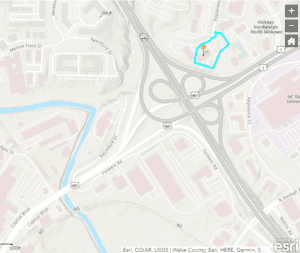Babies and toddlers have a big job. 90 percent of their brain development happens before they even turn five. Every day they creep, crawl, roll, touch, taste, and explore the world around them. All that exploration builds strong brains. That’s why it’s so important for us as adults to keep their environments safe and healthy.
We all know that exposure to lead can be incredibly harmful to the developing brain. And most lead exposure happens at home, where young children are busy exploring. Now parents can use a new tool to find out whether their home is lead-safe – and to connect with experts to safely remove lead risks from their homes.
New tool helps you explore lead-based paint risk in your home and take steps to protect your kids
This week, Lead Free NC is launching a new database that provides parents, realtors, and renovators with easy access to information about whether a home contains risks from lead-based paint. Lead is most often found in older housing. When old paint is flaking off or in poor condition, lead gets into the house dust and everyone is exposed – especially young children. Lead exposure can harm children’s brain development, but fortunately it is preventable. Learn more about the risks here.
Find the new database at www.leadfreenc.org
 North Carolina’s Lead-Based Paint Housing Database contains data about every residential housing unit in North Carolina. It was developed by a team from the Duke University Environmental Law & Policy Clinic, the NC Division of Public Health, the UNC Institute for the Environment, and NC Child.
North Carolina’s Lead-Based Paint Housing Database contains data about every residential housing unit in North Carolina. It was developed by a team from the Duke University Environmental Law & Policy Clinic, the NC Division of Public Health, the UNC Institute for the Environment, and NC Child.
The database designates homes built after December 31, 1977, when the federal ban on lead in residential paint went into effect, as “lead safe.” These houses are presumed to have been built without lead-based paint. Homes built prior to that date are designated as “Lead Status Unknown,” since information is not available about whether existing lead has been removed from older homes.
The database is housed at www.leadfreenc.org, which provides comprehensive resources for parents, pediatricians, realtors, and renovators. The site helps users understand lead risks, and how to get them out of young children’s environments.
Lead exposure can harm healthy brain development for babies and young children
Lead exposure can affect anyone, but it is especially harmful during pregnancy, and for children under the age of six, because their bodies and brains are still developing. Even at low levels of exposure, lead can harm a child’s developing brain. That can harm a child’s ability to concentrate and focus in school, and even reduce IQ. These effects are often permanent. The best way to protect children’s healthy development is to prevent the lead exposure in the first place.
Whether it’s tummy time, snack time, or nap time, there are simple, straightforward steps you can take to keep your youngest family members safe from harmful lead. Explore the new database and learn how you can make sure the babies and toddlers in your life experience a lead-free childhood.


